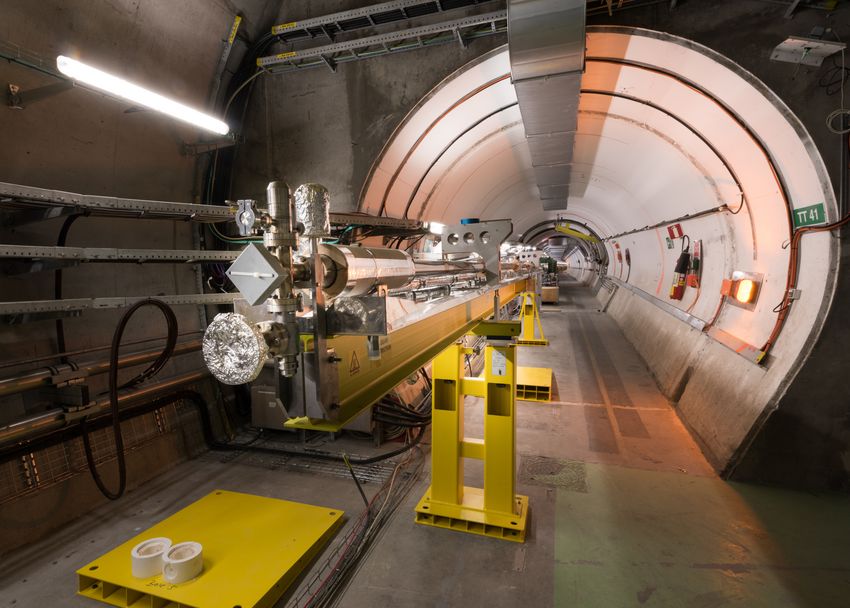Compared to current accelerator concepts, the AWAKE technology offers an alternative technology: Simply put, modern accelerators use strong electromagnetic fields to accelerate charged particles to high energies. The particles themselves travel in the circular or linear stream of vacuum pipes. However: higher energies require larger accelerators - like the Large Hadron Collider (LHC) with a circumference of 27 kilometers.
The AWAKE technology is quite different: A proton beam is injected into an ionized gas – or plasma. "While passing through it, it attracts free electrons, creating waves of electric charges in the wake of the proton beam," explains Patric Muggli, project leader at the Max Planck Institute for Physics. "A second beam of electrons, injected in the right phase behind the proton beam, is accelerated by wakefields, just as a surfer rides a wave."
Protons make better waves
Plasma wakefield acceleration has been demonstrated using an electron beam as drive beam. AWAKE aims to test plasma wakefield generation using protons as "drive beam". The reason to try protons is that they carry more energy than electron beams used for plasma wakefield acceleration.
They can thus propagate farther into the plasma, driving wakefields over longer distances and therefore leading to larger acceleration in a single plasma. Physicists think they could produce acceleration tens of times higher than those achieved with current technologies, thus reducing the size of a future accelerator.
Testing the wakefield concept with protons as a drive beam is the reason why AWAKE project is being built at CERN. There, the physicists can use the strong proton beam of the former CNGS experiment.
AWAKE will complete its first phase of installation this year, with the mounting of the laser, the plasma source, the vacuum equipment and the diagnostic systems. It plans to start the first phase of the experimentation tests of the physics of proton-driven plasma wakefields. Next year, the electron source will be installed to test the "wave-riding" of electrons.
Contact:
Prof. Dr. Patric Muggli
Max Planck Institute for Physics
+49 89 32354-590
muggli@mpp.mpg.de
